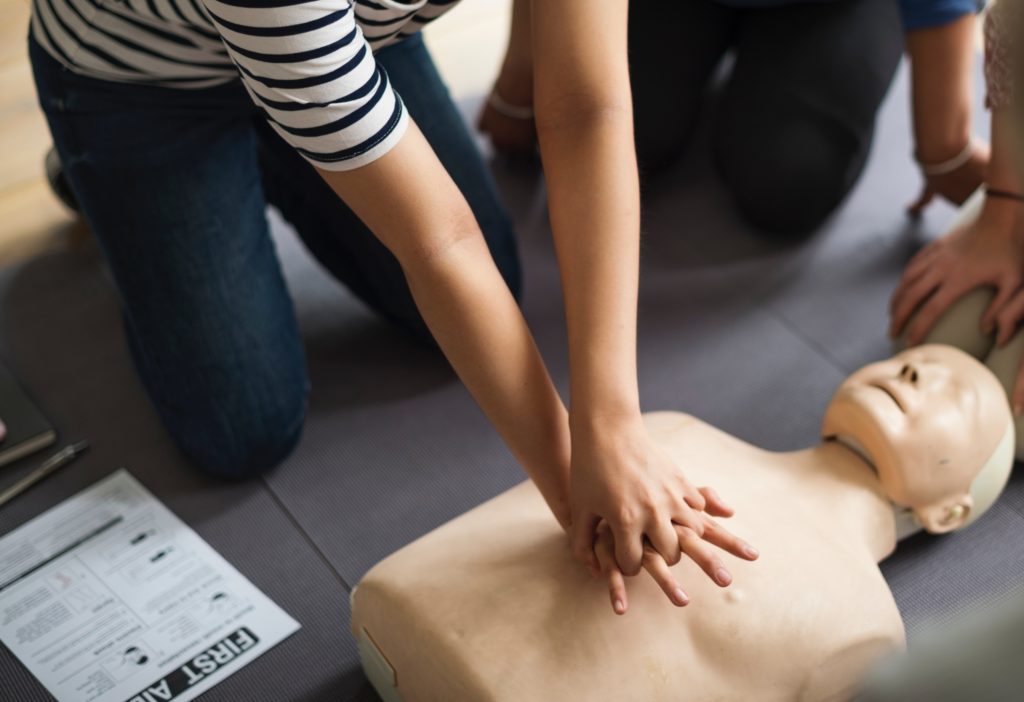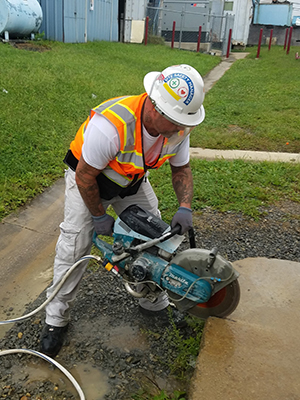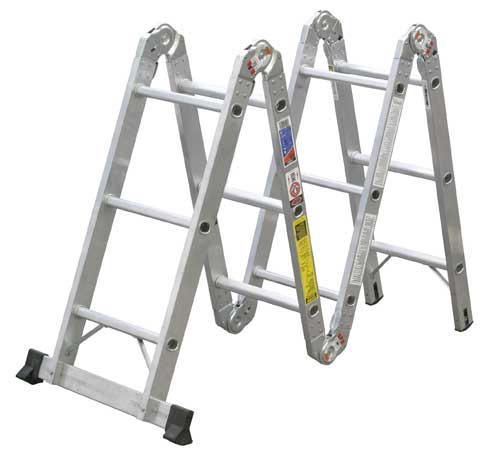 Ouellet Construction is committed to keeping our employees safe.
Ouellet Construction is committed to keeping our employees safe.
At Ouellet Construction, we’re committed to the safety of our employees. Our leadership team understands the value of investing in continued training for all our staff. We are especially cognizant of keeping up with the latest equipment safety training for our employees working with heavy construction equipment out in the field.
Training Schedule for Field Personnel
During the first quarter of 2019, our field personnel has attended on and offsite training on numerous equipment safety topics.
CPR and First Aid Training
 Training for CPR and First Aid began in January. The remainder of our staff will complete the training in April. It’s important that our staff is able to respond in emergency situations, should they occur on the job. By giving our staff the confidence and ability to react in a timely manner to an on-the-job incident, everyone can feel safer in the field, whether working alone or with a team.
Training for CPR and First Aid began in January. The remainder of our staff will complete the training in April. It’s important that our staff is able to respond in emergency situations, should they occur on the job. By giving our staff the confidence and ability to react in a timely manner to an on-the-job incident, everyone can feel safer in the field, whether working alone or with a team.
With proper training, CPR and First Aid can save lives, by allowing employees to address injuries and incidents quickly and appropriately. Furthermore, in the instance of a more serious injury, this type of training allows workers to buy time until medical professionals arrive on the scene.
Silica Dust Training

Source: OSHA
Ouellet staff members operating in the field completed Silica dust training in February. OSHA mandates silica dust training, and for a good reason; it poses serious health risks to those exposed. Individuals exposed to silica dust have a higher risk of developing serious diseases, such as silicosis, lung cancer, chronic obstructive pulmonary disease, and kidney disease.
Training provides employees working in areas with silica dust with steps to take to protect themselves from exposure. One example provided by OSHA discusses an option for working with handheld power saws, stating,
“If workers are sawing silica-containing materials, they can use a saw with a built-in system that applies water to the saw blade. The water limits the amount of respirable crystalline silica that gets into the air.”
This is just one example of safety methods taught during this informative training session.
Ladder Training

Source: American Ladder Institute
Ladder training took place in February as well, in conjunction with silica dust training. Staff members explored basic ladder training, such as appropriate footwear, hands-free climbing, etc. When our staff is out in the field, we want them following best practices for safe ladder use at all times.
According to the American Ladder Institute, “it is safest to utilize ‘Three Points-of-Contact’ because it minimizes the chances of slipping and falling from the ladder. At all times during ascent, descent, and working, the climber must face the ladder and have two hands and one foot, or two feet and one hand in contact with the ladder steps, rungs and/or side rails.”
Forklift Training
Forklift training occurred in early March. Training on forklift safety is crucial for both those operating the machinery, as well as those working in close proximity to the machines while they are in motion.
Some examples of training topics covered related to forklifts include steering and maneuvering, visibility, vehicle capacity, operating limitations, etc. By ensuring our staff is up-to-date on the latest forklift operation training requirements, we set our team up to work in the safest work environment possible.
Aerial and Scissor Lift Training
Aerial and scissor lift training also occurred in March. Training regularly on aerial and scissor lift operation is essential to reducing the occurrence of accidents in the workplace.
There are several potential risks associated with operating this type of machinery. These risks, however, can be effectively minimized by training employees on safety procedures around fall protection, stabilization, and positioning, amongst others.
Ongoing Equipment Safety Training
Ouellet Construction is dedicated to continually educating our employees regarding equipment and on-the-job safety training. Last year, three Ouellet Construction associates went through extensive testing for NCCCO Mobile Crane Operation Certification. This year, we’re focusing on specific safety training courses.
While many of our employees already received much of the training that took place this quarter, we want everyone to stay up-to-date on new safety hazards. Regular and repeated training helps keep our employees knowledgeable about potential worksite hazards so they can keep themselves – and their coworkers – safe.
In addition to our concern for the safety of our staff, we also want to ensure our team is always adhering to the latest industry safety standards and protocols.

